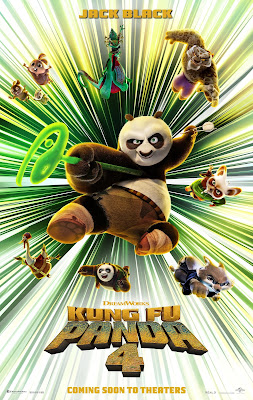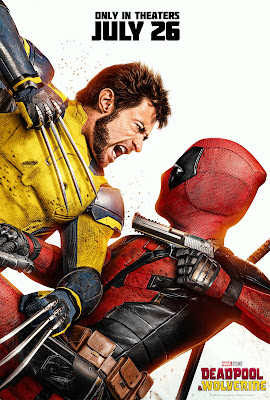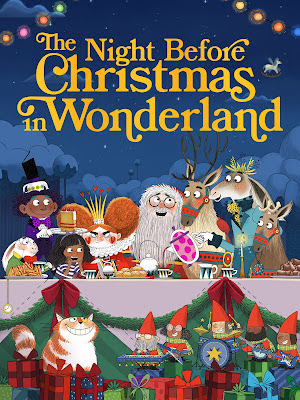Circumstances haven’t really changed much from last year, as we’ve only gone back into a theater when we think it might be worth the price of admission. If not, we may wait until it's on a streaming platform or home video if that isn’t the only way to watch it. While this policy has led to us wasting less money on terrible films, we have slipped up on occasion, as is the case with one of the Disappointments. As usual, only films and games that we’ve seen or played have a chance to end up on this list. If it’s a foreign film or a special version of it, we only take the US release date into consideration.
Top Movies of 2024
Godzilla Minus One/Minus Color
If any Godzilla film deserved awards recognition, it would be Godzilla Minus One. Its emotional human storyline makes spectacular use of Godzilla as a metaphor, both for the devastation of nuclear weapons and the protagonist’s internal journey. Despite its low budget, it also had visual effects that rivaled Hollywood blockbusters, an impressive feat in its own right. We hadn’t seen the original color version, but we did see the Minus Color version, which adds a nice documentary flair through stunning black and white. Although there are a couple nitpicks, I’ll never forget Minus One/Minus Color for how it made me feel terrified of Godzilla in a way no other film in the series came close to matching.
I won’t pretend that superhero films are peak cinema (unless they’re Logan or Sam Raimi’s Spider-Man 2), but I can’t deny that Deadpool & Wolverine provided some of the most fun I had in the theater this year. Although it falls into the trap of including numerous film and meta references that only hardcore Fox Marvel fans would recognize, the film worked well as a love letter to a now bygone era and laugh-out-loud commentary on the Disney/Fox merger. Plus, it had some inventive fight choreography, including the memorable opening scene set to NSYNC’s “Bye Bye Bye”. If you love Deadpool, there’s really no reason not to watch this one.
This year saw the release of three incredible adaptations of robot stories, starting with the US release of Robot Dreams. Like Sara Varon’s original graphic novel, the film features no dialogue (unless you count song lyrics) and instead tells its story entirely through gorgeous visuals. The final film not only understands its source material, but takes advantage of the new medium to expand upon it and draw out more of its emotional core. It’s unfortunate that not may people saw it, so I highly recommend checking out this gem however you can.
Transformers films don’t necessarily have the best reputation, especially the divisive live-action Michael Bay films, but rather than a weak script, Transformers One was more a victim of bad marketing. A shame, really, considering how well it depicted the backstory of the Autobot/Decepticon war and the tragic falling out between Optimus Prime and Megatron. Not only did the film feature strong writing, enough that an expected event still elicits a gasp, but it also had some of the best animation in the franchise and had a surprisingly fitting voice cast who could disappear into their roles. If the marketing didn’t convince you to watch Transformers One, I would encourage you to reconsider and give it a fair chance.
Speaking of emotional robot stories, DreamWorks’ in-house animation went out with a bang with The Wild Robot. Not only does it faithfully adapt Peter Brown’s original novel, with some liberties for a new medium, naturally, but the watercolor visuals do an excellent job of highlighting the dynamic between nature and technology while the voice acting, especially Lupita Nyong’o’s performance as Roz, perfectly captures the emotion behind the themes of motherhood and survival. I don’t know if any future adaptations will live up to this one if they’re not done by the same team, but this is a can’t-miss feature, especially for fans of animation.
It’s not often that a franchise continues improving with each installment, yet Sonic the Hedgehog 3 pulled it off. Not only does it present as faithful an adaptation of Sonic Adventure 2 as it can for a two-hour film, it builds off of the characters and themes of the previous films in a very satisfying way, both for diehard fans and casual filmgoers. Jim Carrey also shows off his talents as an actor portraying two characters who have a good amount of onscreen interaction. Even if Jim Carrey doesn’t return, I’m optimistic for the future of the film series and hope we can continue seeing the same drive and passion that brought it this far.
Top Games of 2024
After four years, the long-awaited follow-up to Final Fantasy VII Remake, Rebirth, finally released. Although I have my gripes with some aspects of the story and the sheer amount of padding, I can’t deny that it’s still a highlight of the year. The improved combat system allows for a good amount of experimentation and the amount of exploration possible within the open world blows the original game out of the water. Even the writing still respects the source material while also taking advantage of hindsight and even improving in certain areas, like Cait Sith’s likeability. The ending did make me morbidly curious how the final part will wrap everything up, especially with a rather famous moment losing its impact, but there’s no reason that Final Fantasy fans should necessarily skip this one.
After the divisive (free) game Silent Hill: The Short Message, Konami’s Silent Hill revival began in earnest with a remake of Silent Hill 2. Against all odds, Bloober Team’s take on perhaps the most celebrated entry lived up to the original game’s legacy and even improved upon it in several places. Although it’s not perfect, its strengths far outweigh its weaknesses and make for a game more than worthy of standing alongside the classic Team Silent entries of old. I now feel more confident about the revival going forward and wonder if perhaps the other Team Silent games can receive a similar treatment to this game.
Four years ago, Łukasz “vanripper” Piskorz showcased some game development talents with Helltaker and has taken it up a notch with Awaria, in which you can kiss ghost girls instead of adding demon girls to a harem. While Awaria's world isn't as well-defined as Helltaker, vanripper still has a knack for creating unique and endearing characters with a nice visual style. His foray into time and resource management gets a bit difficult towards the end, but nonetheless fixes the issue where his first game didn't have much replay value apart from getting faster at solving block puzzles. Here's hoping that I won't have to wait as long for his next game.
Top Disappointments of 2024
When a franchise that already ended on a high note tries squeezing blood from a stone, you get Kung Fu Panda 4. While not completely without merit, just about everything falls short of its predecessors thanks to a much weaker script and villain, a strong emphasis on comedy over heart and just a bit too much Akwafina. Learning about the behind-the-scenes drama didn’t help much at all apart from realizing that it could still have been so much worse. Although it pains me to say this, perhaps it’s time this franchise goes to the spirit realm.
IF
While perhaps coming from a well-intentioned place, IF can’t quite decide what it wants. Apart from certain twists that you can see coming from a mile away, the film gets a bit too wrapped up in establishing the world of imaginary friends that it doesn’t bother explaining the real-world portion in enough detail, like what exactly the father is getting surgery for, that would help the audience connect with the human characters. Quality animation also can’t save the mixed bag of voice acting, which would have benefited more from using professional voice actors (but then they couldn’t get more big names on the poster, could they?). If you want a better execution of the “orphanage for imaginary friends” premise, consider watching Foster’s Home for Imaginary Friends instead.





































